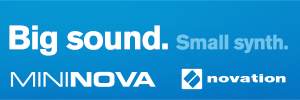"First dual normal saws, and then I activate the 'Hidden Waves' on the 3rd oscillator, After that i play a few of the other Hidden Waves
I got hold of a ROM from Ebay [you can find
some here] that allows access to extra "Hidden Waves" in the SQ80.
Not sure if they are extra hidden waves as such, but more like glitched areas in the waveform memory area
They change sounds every octave and some sound identical to the normal waves, and there are duplicates. Still it does add something interesting, and has that extra warmth of the SQ80 analog bits"
via Sam on the AH list:
"The ESQ-1 can access these "hidden waveforms" as well. (I wrote an article for the Transoniq Hacker, probably in the early '90's, about this.) In fact, Syntaur sells a bank of sounds for the ESQ that relies on these waves. They are not really extra waves (purposefully created) that are somehow hidden - but it was a good marketing term...
Instead of finding real waveforms, you're just telling the machine to look outside of the regular wavetable to get its wave data. So it's grabbing wave data from various points in the firmware that are supposed to be other things. For example, what comes up as WAV123 might really be a bit of the code that tells the keyboard how to respond to incoming MIDI data or something. So most of the hidden waves are going to sound really glitchy (which can be cool, too), but a few of them actually sound musical. In any case, you can certainly make the ESQ or SQ-80 sound different from what it's supposed to sound like.
You can get to the waves in a couple of different ways. The most popular way (on an ESQ) is to insert a cartridge that has SQ-80 sounds which use the SQ-80's expanded wave table. The ESQ doesn't know how to acces the expanded waves, so you end up seeing WAV053 and such instead of the regularly-named waves from the table. We did it another way: by actually crashing the OS (I think we loaded in crazy data through the Tape In), and this way, we got many more of the "hidden" waves (over a hundred, I think). The problem is that you can scroll downward through them, but you can never go back up. One other thing with this method we used was that it also gave parameter values that were outside the "legal" ranges, such as really high octave settings and such.
I've seen the eBay listings for the EPROMs that do this, and I was curious how the seller did it, and how well everything works.
Sam"

via
this auction
"Ensoniq ESQ1 V3.5HW Hidden Waves EPROMs Circuit Bent
Expand the Sound Pallette of Your ESQ1
International buyers shall be responsible for all customs, levies or VATS imposed by their country.
Included in this listing:
2 upgrade EPROMs to upgrade 1 ESQ1 unit
Printed instructions
About the upgrade: The 3.5HW OS (designated as 3.53 on startup screen) is identical to the standard 3.5 OS, with the addition of 180 waveform selections. These 'hidden waveforms' are mostly 'glitch' type of sounds and many selections change character/sound with every octave.
What do they sound like?: Many of the waveforms are glitchy and raw--as if the ESQ1 is circuit bent, making sounds it isn't supposed to. Many of the waveforms are also similar to the stock waveforms but with some dirtied up a bit. If you are into sound design/effects, 'glitch' electronic, experimental, circuit bending/bent instrument sounds, etc. then it may appeal to you.
Why are they "hidden"?: The hidden waveforms are contained in the standard OS 3.5 however they are not user accessible--Ensoniq probably did not think that they would be usable for average keyboard players. Why are they there in the first place--who knows? Perhaps a placeholder for a more conventional expansion option. But nowadays with sonic pallettes expanding into more experimental territory, the hidden waveforms are more useful, and so the 3.5HW OS lets you use these waveforms that were once hidden. Envelopes, DCA and the ESQ1's analog filters can be applied to these waveforms just as they can to the regular waveforms.
Installation: No soldering required. On units with plastic case, just open up unit and replace EPROMs. Installation on units with metal case requires removing the keyboard to access the socketed EPROMs. More detailed instructions are included with purchase.
EPROMs will be shipped in an anti-static packaging."
Update: Forgot to mention this reminds me of "
the happy accident".












































